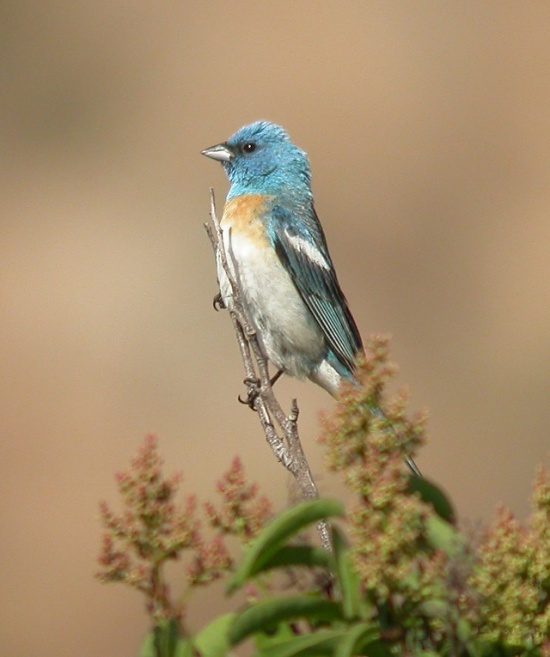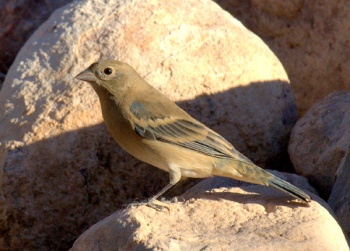- Passerina amoena
Identification
L. 13-14 cm (5-5½ in).
Male
- Blue head and back
- White wingbars and belly
- Rusty breast
Female: brown and grey
Distribution
Western North America north to British Columbia, south to Mexico, and east to western North Dakota, state of Colorado, and western Texas.
Taxonomy
This is a monotypic species[1].
Habitat
Grassland with scattered brush and tall trees.
Behaviour
Diet
Includes seeds and insects.
Breeding
It makes a loose cup nest of grasses and rootlets placed in a bush. 3-4 pale blue eggs are laid.
References
- Clements, J. F., T. S. Schulenberg, M. J. Iliff, S. M. Billerman, T. A. Fredericks, B. L. Sullivan, and C. L. Wood. 2019. The eBird/Clements Checklist of Birds of the World: v2019. Downloaded from http://www.birds.cornell.edu/clementschecklist/download/
- Greene, E., V. R. Muehter, and W. Davison (2020). Lazuli Bunting (Passerina amoena), version 1.0. In Birds of the World (A. F. Poole, Editor). Cornell Lab of Ornithology, Ithaca, NY, USA. https://doi.org/10.2173/bow.lazbun.01
- Cornell Lab of Ornithology. 2019. Lazuli_Bunting in: All About Birds. Cornell Lab of Ornithology, Ithaca, New York. https://www.allaboutbirds.org/ Accessed on 15June 2020
Recommended Citation
- BirdForum Opus contributors. (2025) Lazuli Bunting. In: BirdForum, the forum for wild birds and birding. Retrieved 11 May 2025 from https://www.birdforum.net/opus/Lazuli_Bunting
External Links
GSearch checked for 2020 platform.1





